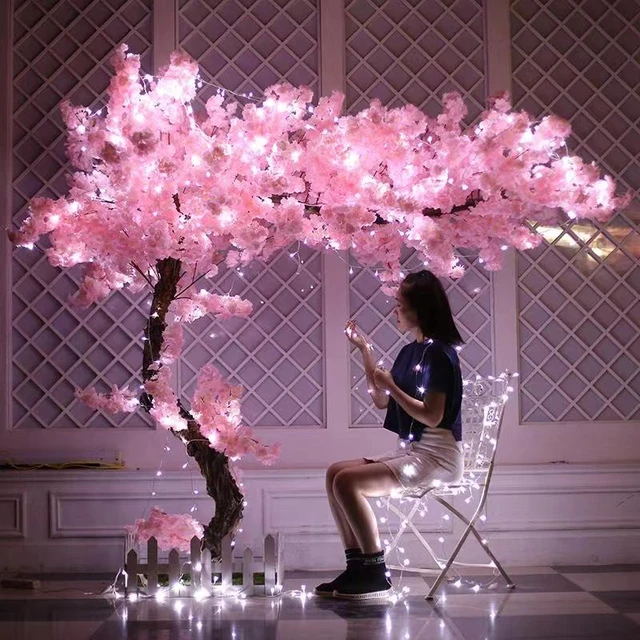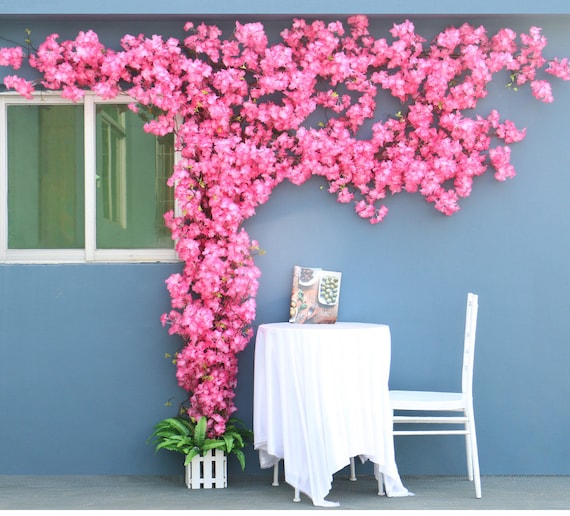Cherry blossoms have captured the hearts of many with their beautiful delicate petals and enchanting fragrance. These floral wonders are not just a sight to behold; they also hold cultural significance and play a vital role in landscape design. Join me as we explore everything there is to know about decorative cherry blossoms, from their varieties to their care and uses.
Understanding Decorative Cherry Blossoms
Decorative cherry blossoms belong to the genus Prunus and are often cultivated for their astoundingly beautiful flowers. Unlike fruit-bearing cherry trees, decorative varieties focus solely on visual appeal. Experiencing cherry blossoms in bloom can be magical, often reminding me of tranquil moments spent outdoors, soaking in the beauty of nature.
Types of Decorative Cherry Blossoms
There are several varieties of decorative cherry blossoms, each with unique characteristics. Here’s a brief overview of the most popular types:

| Cherry Blossom Type | Scientific Name | Main Characteristics | Best Use |
|---|---|---|---|
| Yoshino Cherry | Prunus x yedoensis | White-pink flowers, fragrant | Ornamental gardens |
| Kwanzan Cherry | Prunus serrulata ‘Kwanzan’ | Double pink flowers, sturdy branches | Commercial landscaping |
| Weeping Cherry | Prunus subhirtella ‘Pendula’ | Graceful drooping branches, pink flowers | Accent planting |
| Okame Cherry | Prunus x incam ‘Okame’ | Single pink flowers, early bloomer | Public parks |
| Snow Fountains Cherry | Prunus serrulata ‘Snow Fountains’ | White flowers, arching habit | Small gardens |
Popular Cherry Blossom Varieties
In addition to those mentioned above, let’s look at a few other popular varieties:
- Shirotae Cherry: Known for its large, white flowers that bloom in spring.
- Fugenzo Cherry: Features beautiful, pale pink flowers that eventually turn white.
- Autumn Cherry: Blooms sporadically during the fall, adding color beyond spring.

The Cultural Significance of Cherry Blossoms
Cherry blossoms are steeped in cultural traditions, particularly in Japan, where they symbolize the transient nature of life. Hanami, the Japanese practice of flower viewing, celebrates the fleeting beauty of these blooms. Personally, I cherish the quiet moments spent under a blooming cherry tree, reflecting on its beauty and the cycles of nature.

Cherry Blossoms Around the World
While cherry blossoms are most famously associated with Japan, they can be found in various cultures worldwide:
- United States: Washington D.C.’s National Cherry Blossom Festival celebrates the gift of cherry trees from Tokyo.
- China: Cherry blossoms represent feminine beauty and love in Chinese culture.
- Korea: In Korea, cherry blossoms are associated with spring and renewal.

Planting and Caring for Decorative Cherry Blossoms
To enjoy the beauty of cherry blossoms in your own garden, it’s essential to understand the best planting and care practices. Here’s a comprehensive guide:

Choosing the Right Location
Cherry blossoms thrive in full sun and well-draining soil. Choose a location that receives at least 6 hours of direct sunlight daily.
Soil Requirements
The soil should be slightly acidic to neutral (pH 6.0-7.0) and enriched with organic matter. Here’s how to prepare your soil:
- Mix compost or well-rotted manure into the soil.
- Ensure good drainage to prevent root rot.

Planting Steps
- Dig a hole twice the width of the root ball and deep enough to accommodate the roots.
- Place the tree in the hole, ensuring the top of the root ball is level with the soil surface.
- Backfill the hole with soil, gently patting it down to remove air pockets.
- Water thoroughly after planting.
Watering and Fertilizing
Cherry blossoms require regular watering, especially during dry spells. Use the following guidelines:
- Water deeply once a week.
- Fertilize with a balanced fertilizer in early spring, following package instructions.
Pruning and Maintenance
Regular pruning helps maintain the structure and health of your cherry blossom tree.
- Remove dead or diseased branches.
- Thin the canopy to improve air circulation.
- Shape the tree during dormancy, typically in late winter.
Common Pests and Diseases
Watch out for pests like aphids, borers, and spider mites. Use organic insecticides or neem oil when necessary. Common diseases include:
- Powdery Mildew: Treat with fungicides if necessary.
- Cherry Leaf Spot: Improve air circulation and remove infected leaves.
Incorporating Cherry Blossoms in Landscape Design
Decorative cherry blossoms are versatile in landscape design. They can be used in various ways:
Creating a Cherry Blossom Orchard
If space allows, plant multiple cherry trees to create a stunning orchard. It can be an inviting space for relaxation and social gatherings during the blooming season.
Accents in Smaller Gardens
For smaller gardens, consider dwarf varieties of cherry blossoms that provide visual interest without overwhelming the space.
Cherry Blossom Pathways
Planting cherry trees along pathways can create stunning entry points to homes or gardens. Imagine walking down a path lined with blooming cherry blossoms—it’s magical!
Cherry Blossoms in Home Decor
Beyond landscaping, cherry blossoms can enhance home decor, adding elegance and a touch of nature indoors.
Decorative Arrangements
Cherry blossom branches make stunning arrangements for weddings and home decor. Their delicate beauty can transform any space.
Artwork and Prints
Incorporate cherry blossom art into your home. Prints, paintings, and photographs can evoke a serene and calming atmosphere.
Pros and Cons of Decorative Cherry Blossoms
| Pros | Cons |
|---|---|
| Stunning aesthetic appeal in spring | Short flowering season |
| Attracts pollinators | Requires full sun and well-drained soil |
| Variety of types to suit different gardens | Susceptible to pests and diseases |
| Cultural significance and symbolism | Can be costly to establish an orchard |
FAQs About Decorative Cherry Blossoms
What is the best time to plant cherry blossom trees?
The best time to plant cherry blossom trees is in early spring or fall when the weather is mild.
How fast do cherry blossom trees grow?
Most cherry blossom trees grow at a moderate rate of about 1 to 2 feet per year, depending on the variety.
Can cherry blossom trees survive winter?
Yes, most cherry blossom trees are hardy and can survive winter conditions, especially when properly cared for.
How long do cherry blossoms last?
The blooming period for cherry blossoms typically lasts about 1 to 2 weeks, but this can vary depending on the weather and specific variety.
Are cherry blossom trees messy?
Yes, cherry blossom trees can drop petals and leaves, which can create a mess. However, many find this charming as it adds to the beauty of the tree.
Conclusion
Decorative cherry blossoms are an exquisite addition to any landscape or home decor. Their beauty, cultural significance, and the joy they bring during blooming season are simply unmatched. Whether you choose to plant them in your garden or adorn your home with their essence, cherry blossoms are sure to create a lasting impression. I hope this guide inspires you to immerse yourself in the world of cherry blossoms and enjoy their beauty as much as I do.